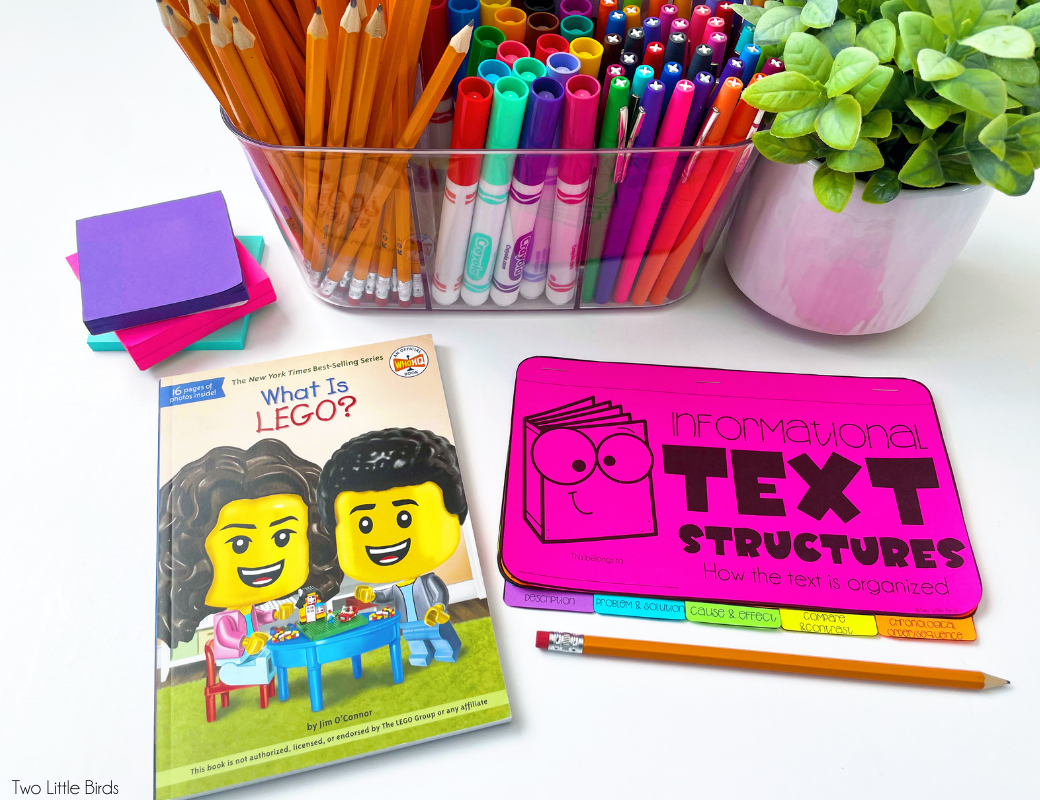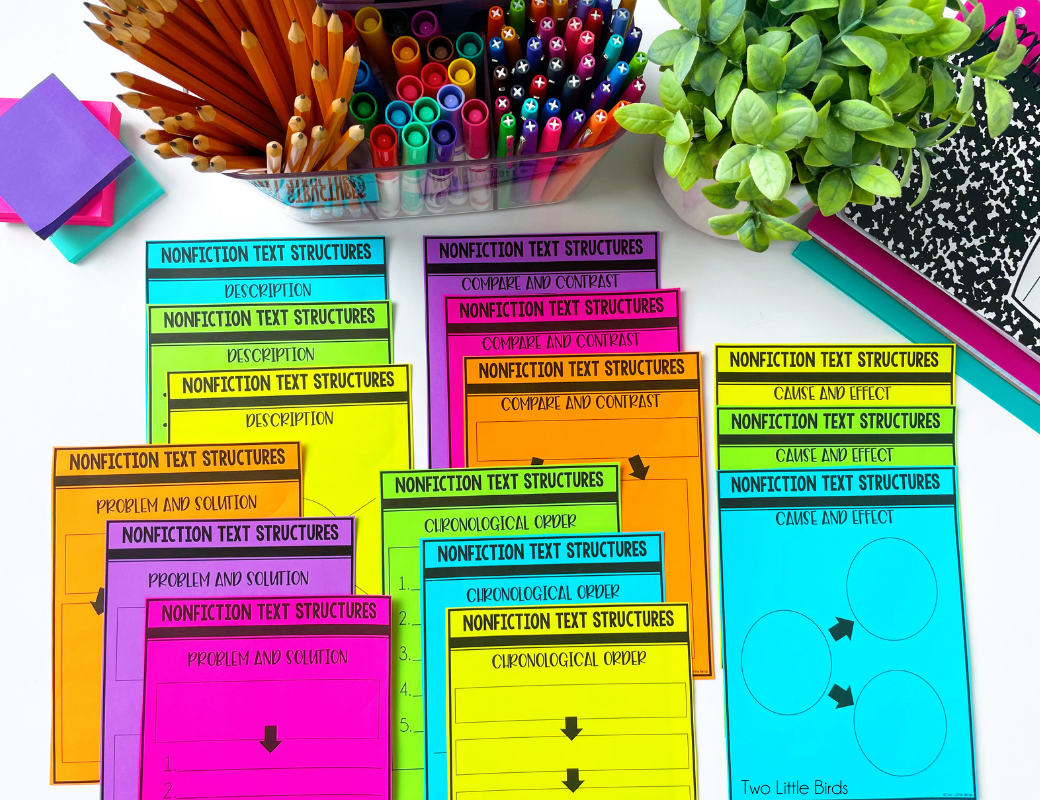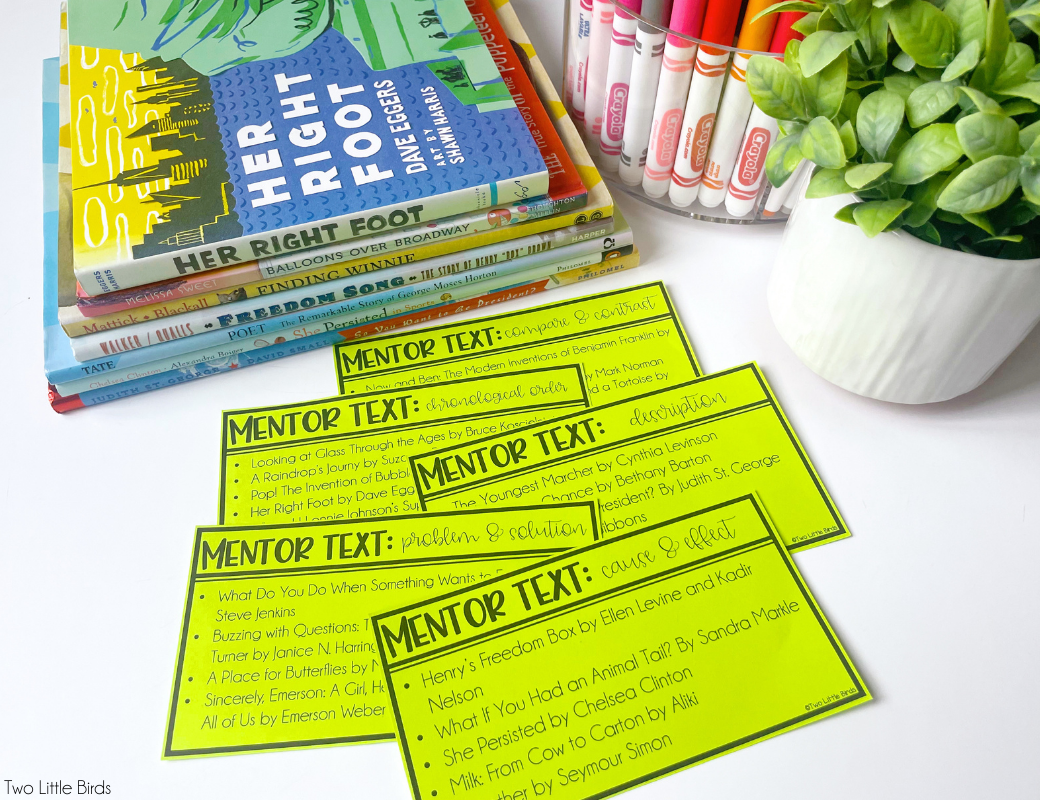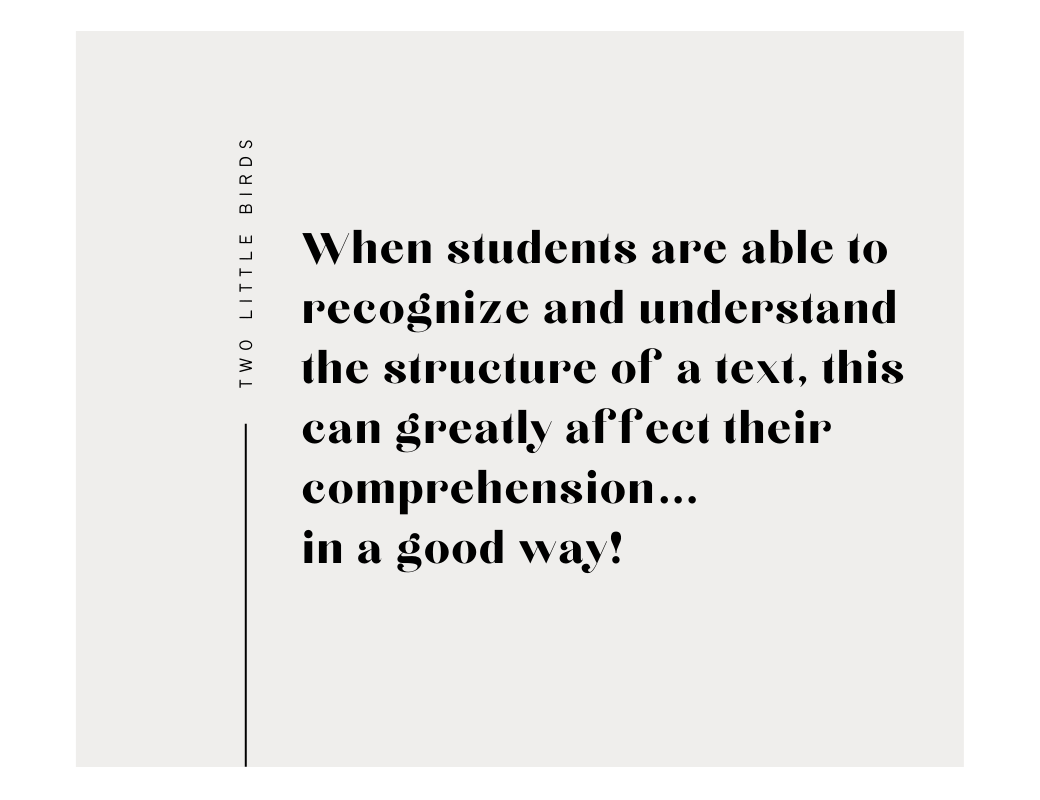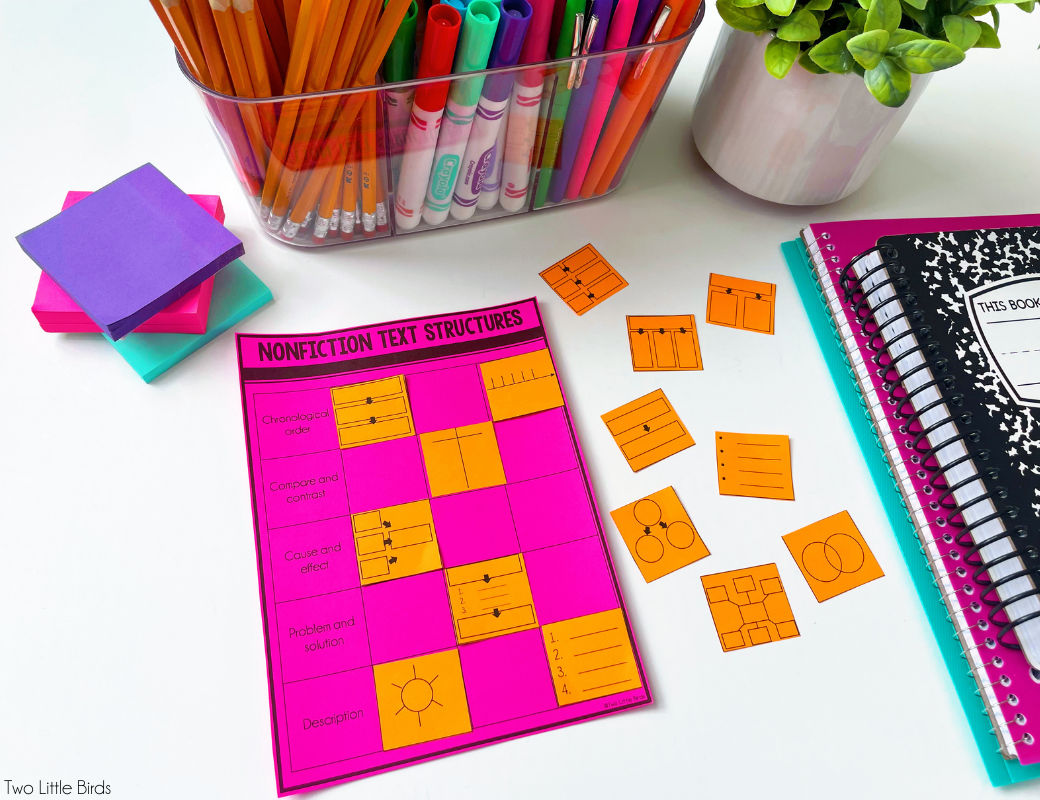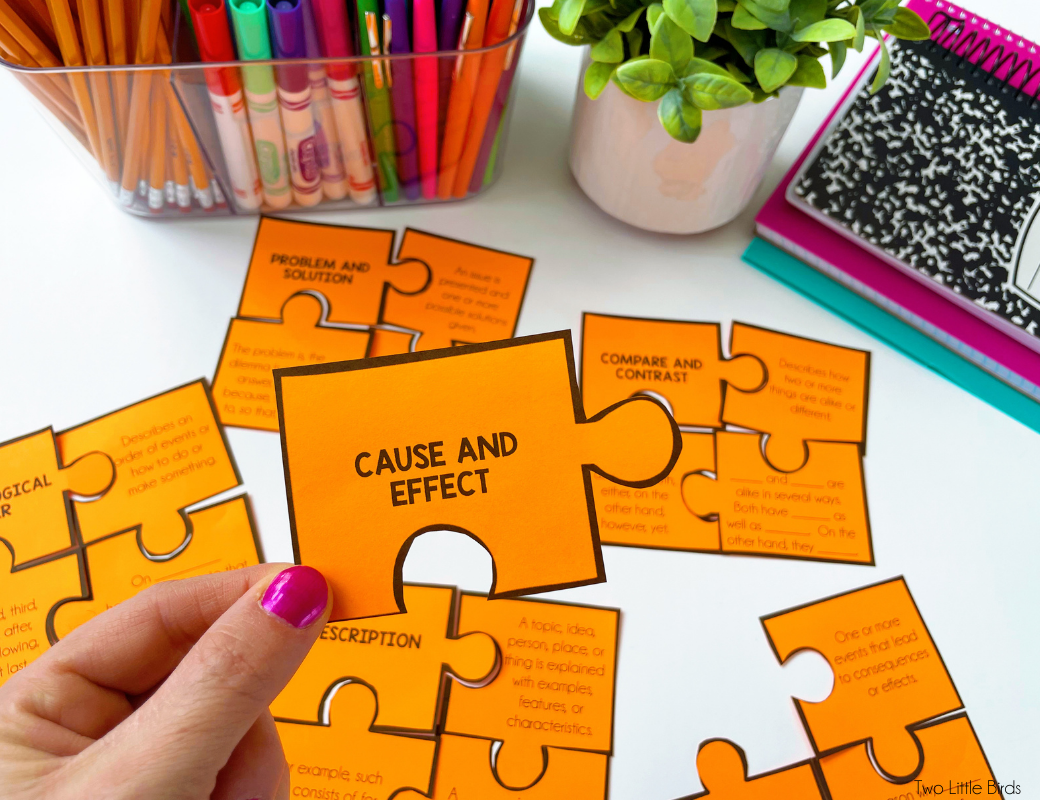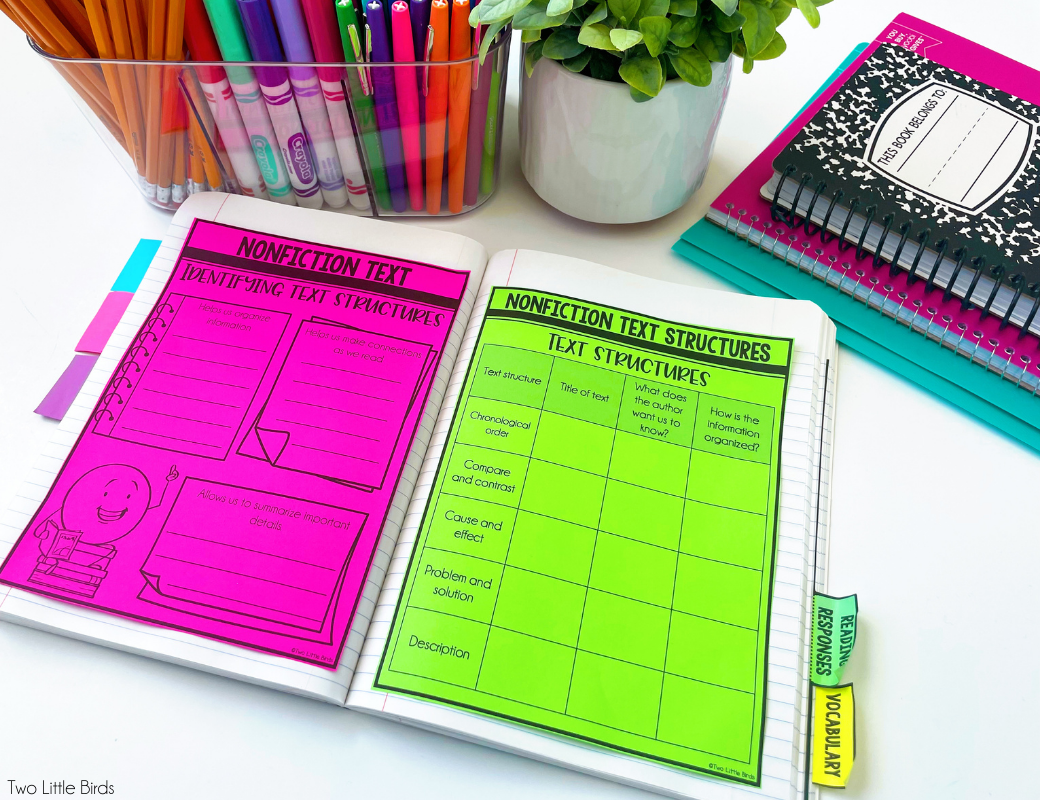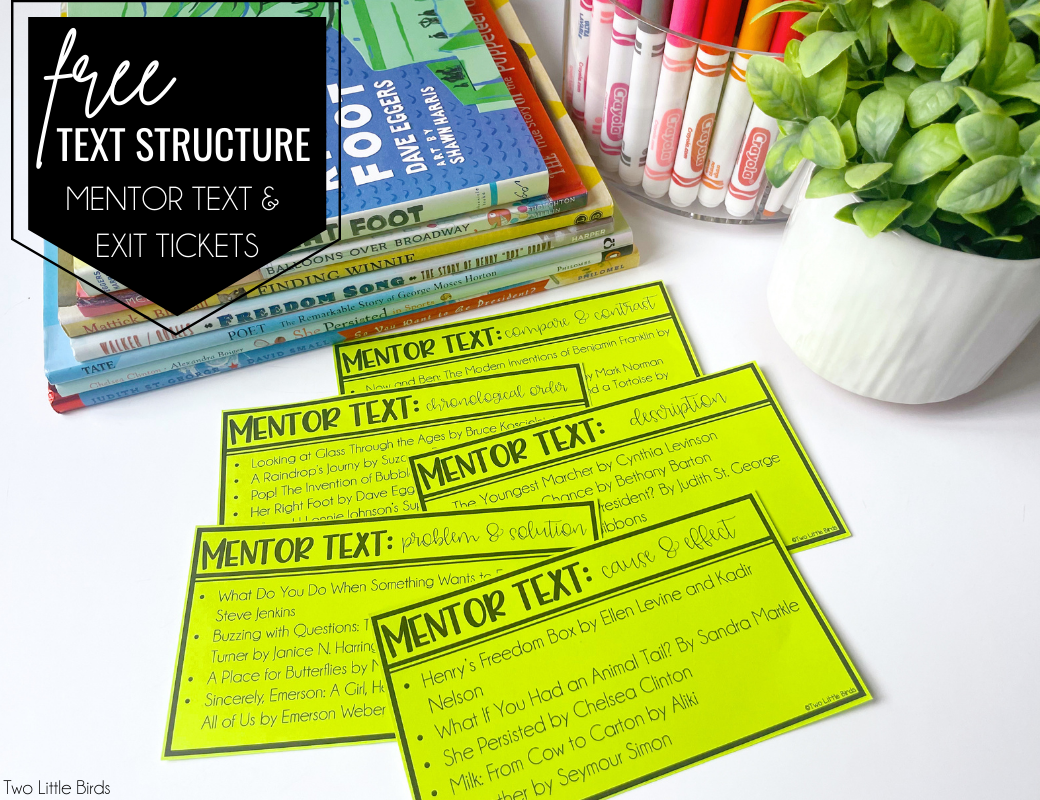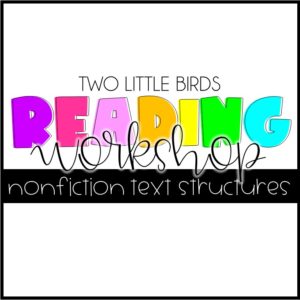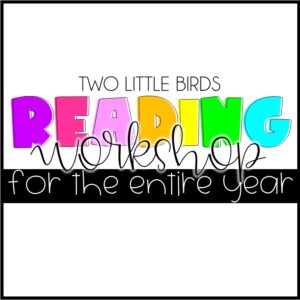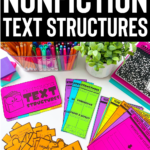Nonfiction text structures are the way in which a text is organized by the author. It is an important skill when reading informational text that helps students analyze the text. When students are able to recognize and understand the structure of a text, this can greatly affect their comprehension…in a good way!
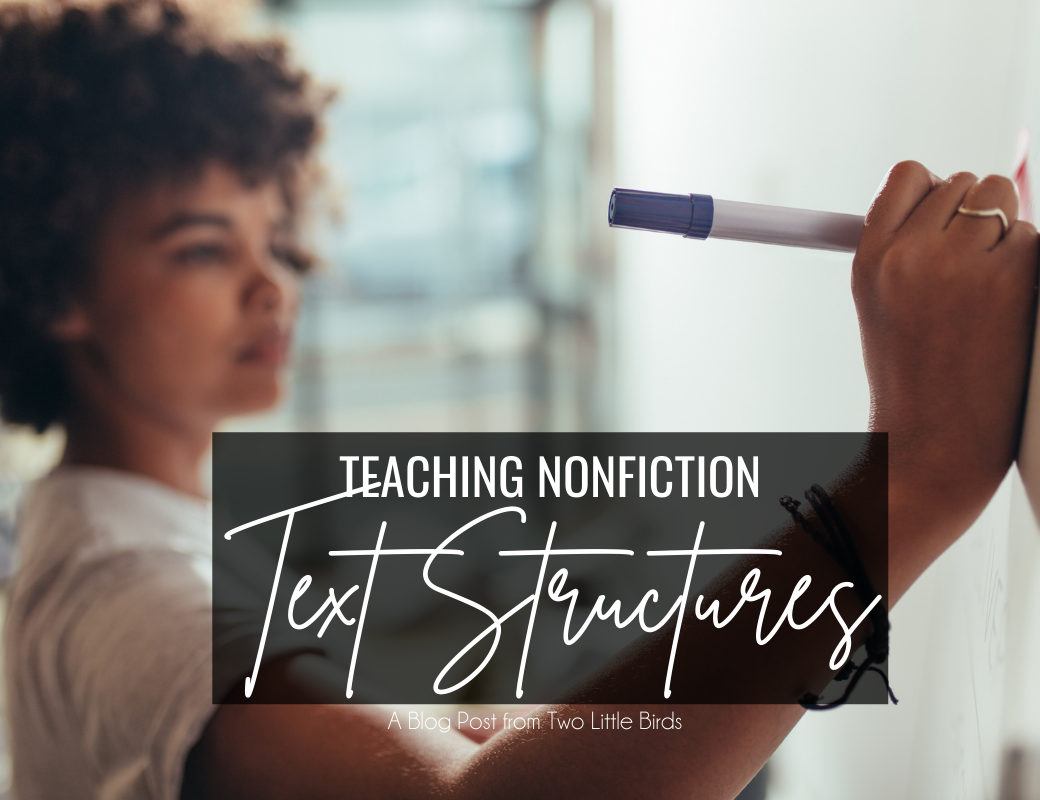
Understanding Nonfiction Text Structures
In helping students understand text structures, you are working to improve comprehension by:
- Navigating nonfiction texts
- Gaining meaning while comprehending what they read
- Developing their memory by recalling what they have read
- Organizing and prioritizing information
- Identifying relevant information
- Understanding the main idea
- Using text-based evidence & supporting details
- Having a purpose for reading nonfiction text
- Actively engaging in the text
What are Nonfiction Text Structures?
Text structure refers to how the details and the information are organized in a text. There are five different types of text structures: cause and effect, descriptive, chronological order, problem and solution, and compare and contrast.
Teaching Nonfiction Text Structures:
When introducing nonfiction text structures, having a variety of nonfiction texts available as mentor text is a great way to immerse students in nonfiction text structures. Having a wide variety of topics and kinds of nonfiction text will expose students to authentic nonfiction text and a variety of structures that will help to strengthen their understanding of text structures while building understanding and comprehension.
Here are some tips to consider as you are teaching text structures:
- Activate prior knowledge and discuss interesting features of the text.
- Teach new vocabulary first so students become familiar with unknown words.
- Preview the text by looking at the title, headlines, headings, photographs/pictures.
- If students approach the text with some background, they’re more likely to comprehend the material being presented.
- Identify the relationship between details in the text
- Help students understand the keywords used to show the relationship between details.
- Compare and contrast text structures by using multiple texts so students can see them in action.
Two Favorite Text Structure Activities:
Here are two engaging activities to try with your students to practice identifying nonfiction text structures.
1. Text structure sort
Using graphic organizers to organize the details of a nonfiction text can be a great way to help students identify the text structure. When students can identify the relationships between the details they are able to better understand the text structure and its purpose.
Students can do a text structure sort where they look at different graphic organizers and decide what text structure that organizer would work best with. They will have to think critically to properly sort the graphic organizers and decide why the details would best be organized each way.
2. Text structure puzzles
You can create puzzles by simply folding a page into fourths and cutting. Each piece of the puzzle can feature keywords, descriptions, a sentence, or a graphic organizer example for each text structure. Students will have to carefully look at the information to match it to the text structure.
Pulling apart text structures in this way and not only reading a text and identifying the structure will not only be memorable to students but will help them as they read nonfiction text in the future.
If students are struggling with understanding text structures:
- Start with a shorter text, even 1-2 sentences, where students can pick out keywords to focus on the text structure.
- Highlight sentences or keywords that help show the relationships between the details in the text.
- Use a graphic organizer to organize details or keywords used in the text.
I hope you found some new ideas for helping your students identify and use nonfiction text structures to strengthen their comprehension.
You can find the resources featured in this post here:
This post contains affiliate links.

